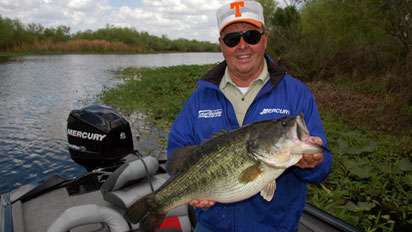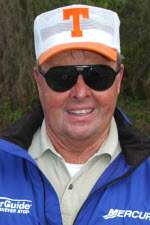
“Hooommme, hooommme on the raannggeee! Where the deer and the antelope plaaaayyyyy, heeeyy, heeeyy! Where seldom is heard a discouraging word … and the big bass, why they bite all daaaayyy, heeeyy, heeeyy!”
Sorry about that slightly off-key intro, pardners (note the “pardners” keeps with my cowboy theme and all). I know you guys really appreciate my singing … er, I mean vocal styling … even if you are only reading it as opposed to listening, right?
(Crickets chirp. An ant coughs.)
Well, OK then … maybe not.
But seriously, where I am going with all this, on key or not, leads to the question of whether or not largemouth bass exhibit a home range tendency. It’s something anglers have debated for ages: Do largemouth bass have specific places they routinely hang out, if not call home? For example, when bass move to a shoreline, do they continue to occupy the same place repeatedly or do they pick new sections of shoreline at random?
Studies by biologists have shown that bass do have a home range. In fact, several years ago, two scientists studied the bass population in a lake in Illinois and came to the same conclusion. The technique they employed was to cover the shoreline in a boat and use electro-fishing equipment to capture bass on shoreline cover. The fish were then marked for identification and returned to the water unharmed. Over the course of the following months, the procedure was repeated a number of times and records kept of where each tagged bass was found.
One of the more interesting facts to come from this study was that on the average only 1.2 percent of the bass were on the shoreline at any one time. That meant that most of the bass population — over 98 percent of it — was out from the shoreline or in deeper water the majority of the time.
Recaptures indicated that 96 percent of the fish that did invade the shallows or shoreline were recaptured within 300 feet of the locale where they were first caught and marked for identification. With some fish, recapture took place three or four times; yet they were always within the same area where originally caught. In addition, after wintering in deep water, the same bass returned to the same segment of shoreline.
What’s it all mean for those that want to catch bass? Well, for me it means the next time you or I locate a productive area, we need to make a mental note of it. And if conditions are about the same the next time we are in the area, then we should make a point to fish it again — no matter if it’s a week, a month or even a year later.
The studies indicate, with similar conditions of course, that it’s a case of once a hotspot always a hotspot, as far as largemouth bass are concerned.
For more words of wit and wisdom from one of our sport’s greatest legends, check out www.billdanceoutdoors.com.

